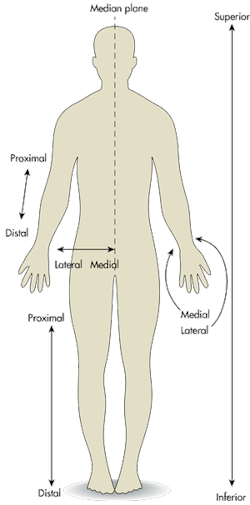The Difference between Medial and Lateral, Proximal and Distal, and Superior and Inferior (Biomechanics)
This article originally posted on June 22, 2016. It was updated on May 29, 2024.
When designing machines, an understanding of anatomical terms such as medial and lateral, proximal and distal, and superior and inferior are helpful to know. Understanding these terms can be applied to the placement of components to the centerline of the machine; to the starting or ending point of a process or system; and to the positioning of elements within a vertical structure or stack.
In this article, the following frequently asked questions will be answered:
- What is the difference between medial and lateral body?
- What body parts are proximal and distal?
- What do the terms superior and inferior mean?
READ MORE: Safe Zone: AI-Powered Platform Keeps Industrial Workspaces Safer | Machine Design
There are a host of terms used by healthcare professionals and biomedical engineers to describe anatomical positions and relative locations of muscles, organs, bones, and other structures in the human body. Some can be confusing. Here are explanations of three pairs of anatomical opposites. (Note: They all apply to a standing human body.)
Medial and Lateral
Medial refers to being toward the midline of the body or the median plane, which splits the body, head-to-toe, into two halves, the left and right. Lateral is the side of the body or part of the body that is away from the middle. So arms are lateral to the torso while the torso is medial to the arms. And the medial side of the knee is the inside part or side nearest to the other knee, while the lateral side of the knee faces away from the center of the body and is farthest from the other knee.
Ipsilateral refers to things on the same side of the body, the right or the left as defined by the median plane. So a person’s left arm and leg are ipsilateral. And if a person had a rash only on the right side of his torso and head, the rash would be ipsilateral. The spleen and descending colon, both on the left side of a body, are also ipsilateral. Contralateral refers to things on opposite sides of the median plane. That makes a person’s arms contralateral as well as his legs, ears, and lungs.
Proximal and Distal
These two terms are almost always used in reference to relative locations of parts or places on the limbs. Proximal then refers to something closer to the torso while distal refers to parts and places away from the torso. So a finger is distal to the wrist, which is distal to the elbow, which is distal to the shoulder. Or, similarly, the femur is proximal to the knee, which is proximal to the ankle, which is proximal to the toes.
Superior and Inferior
These terms reference the body’s vertical axis, and a body part higher than another or above it is said to be superior to it; conversely, the other body part is inferior to the first. So the head is superior to the neck, the neck is superior to the torso, and the torso is superior to the legs.
READ MORE: Q&A: Design for Electrification, Design for Ergonomics and New Analysis Tools | Machine Design
By incorporating these terms into machine design discussions, engineers can better communicate and visualize the placement and relationships of components within a system. Understanding these spatial terms can help with the efficiency and functionality of the machines.


